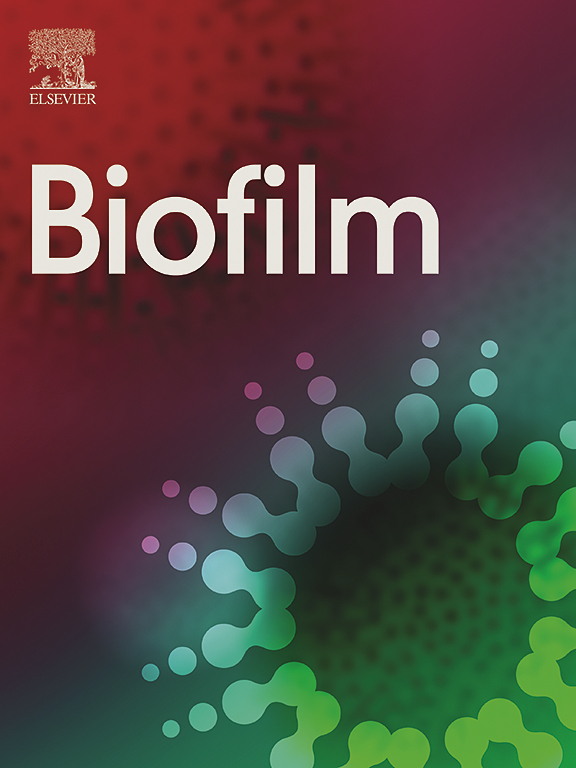Fluorene derivatives as potent antifungal and antibiofilm agents against fluconazole-resistant Candida albicans
IF 4.9
Q1 MICROBIOLOGY
引用次数: 0
Abstract
Candida albicans ranks as one of the most common causes of fungal sepsis in hospitalized patients around the world with an increasing mortality rate. The current antifungal drugs in use face several limitations including fungal resistance due to biofilm formation. This has complicated the treatment landscape, necessitating the need for continued search for effective therapeutic options against drug-resistant C. albicans threats. Therefore, this study investigated eighteen fluorene derivatives for their antifungal and antibiofilm potential against C. albicans. Two fluorene derivatives namely: 9,9-bis(4-hydroxyphenyl) fluorene (BHPF) and fluorene-9-acetic acid (FAA) were identified as potential inhibitors of Candida biofilms, achieving 97 % and 89 % inhibition at 10 μg/mL. Microscopic studies also confirmed their antibiofilm efficacy, with BHPF demonstrating activities comparable to amphotericin B. Furthermore, BHPF inhibited planktonic cell growth at concentration as low as 5 μg/mL. Both BHPF and FAA exhibited fungicidal activity and also inhibited C. albicans virulence factors such as cell aggregation and hyphal formation. Notably, neither compound showed propensity for resistance development over 15 passages. Additionally, toxicity evaluations in both plant and Caenorhabditis elegans model revealed non-to mild toxicity, and the ADMET prediction also satisfied the criteria for drug-likeliness. The results of this multifaceted investigation highlight the potential of BHPF and FAA as novel antifungal agents targeting C. albicans infections and biofilm-related challenges.
芴衍生物作为抗氟康唑耐药白色念珠菌的有效抗真菌和抗生物膜剂
白色念珠菌是世界各地住院患者真菌败血症的最常见原因之一,死亡率不断上升。目前使用的抗真菌药物面临着一些限制,包括由于生物膜形成的真菌耐药性。这使治疗前景变得复杂,需要继续寻找有效的治疗方案,以对抗耐药白色念珠菌的威胁。因此,本研究考察了18种芴衍生物对白色念珠菌的抗真菌和抗生物膜潜能。两种芴衍生物:9,9-双(4-羟基苯基)芴(BHPF)和芴-9-乙酸(FAA)被鉴定为假丝酵母菌生物膜的潜在抑制剂,在10 μg/mL下分别达到97%和89%的抑制作用。显微镜下的研究也证实了它们的抗生物膜作用,BHPF的活性与两性霉素b相当。此外,当BHPF浓度低至5 μg/mL时,浮游细胞的生长受到抑制。BHPF和FAA均表现出杀真菌活性,并抑制白色念珠菌细胞聚集和菌丝形成等毒力因子。值得注意的是,这两种化合物在15个传代中都没有表现出抗性发展的倾向。此外,在植物和秀丽隐杆线虫模型中的毒性评估均显示无至轻度毒性,ADMET预测也满足药物可能性标准。这项多方面的研究结果强调了BHPF和FAA作为针对白色念珠菌感染和生物膜相关挑战的新型抗真菌药物的潜力。
本文章由计算机程序翻译,如有差异,请以英文原文为准。
求助全文
约1分钟内获得全文
求助全文

 求助内容:
求助内容: 应助结果提醒方式:
应助结果提醒方式:


